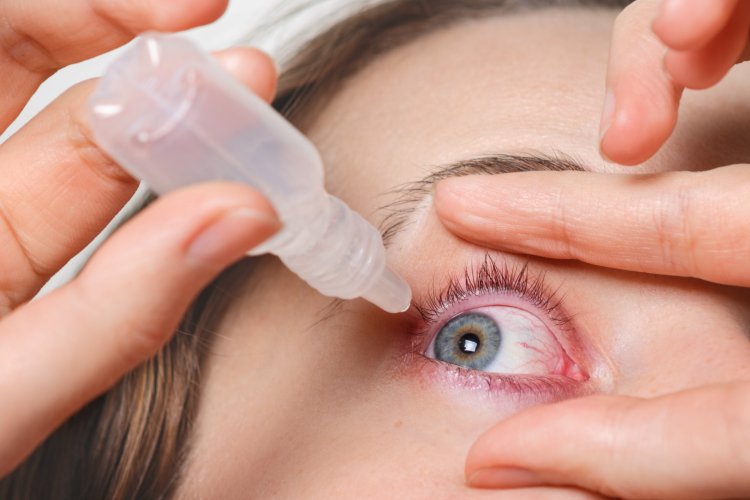Conjunctivitis Chronicles: From Symptoms to Solutions
Conjunctivitis, commonly known as pink eye, is a highly contagious eye condition characterized by inflammation of the conjunctiva, the thin, transparent membrane that covers the white part of the eye and lines the inner surface of the eyelids. This condition can affect people of all ages and is typically caused by bacterial or viral infections, allergies, or irritants. Understanding the causes, symptoms, and treatment options for conjunctivitis is essential for effective management and prevention of this common eye ailment.

Causes of Conjunctivitis
Conjunctivitis can be caused by various factors, including:
- Viral Infections: Viral conjunctivitis is often associated with respiratory infections caused by adenovirus, influenza virus, or herpes simplex virus. It is highly contagious and can spread through direct contact with infected individuals or contaminated surfaces.
- Bacterial Infections: Bacterial conjunctivitis is typically caused by Staphylococcus aureus, Streptococcus pneumoniae, or Haemophilus influenzae. It can occur as a secondary infection following a cold or respiratory illness and is characterized by eye redness, discharge, and crusting.
- Allergic Reactions: Allergic conjunctivitis occurs when the eyes react to allergens such as pollen, dust mites, pet dander, or certain chemicals. It is often accompanied by itching, tearing, and swelling of the eyes and may be seasonal or perennial depending on the allergen.
- Irritants: Chemical irritants such as smoke, pollution, chlorine in swimming pools, or harsh chemicals in cosmetics can cause irritation and inflammation of the conjunctiva, leading to conjunctivitis.
Symptoms of Conjunctivitis
The symptoms of conjunctivitis may vary depending on the underlying cause but commonly include:
- Redness in the white part of the eye or inner eyelids
- Watery or mucous discharge from the eyes
- Grittiness or foreign body sensation
- Itching or burning sensation
- Swelling or puffiness of the eyelids
- Sensitivity to light (photophobia)
- Crusting of eyelids, especially upon waking
Diagnosis and Treatment
Diagnosing conjunctivitis typically involves a comprehensive eye examination by a healthcare professional. The underlying cause of conjunctivitis is determined based on medical history, symptoms, and sometimes laboratory tests such as conjunctival swabs or cultures.
Treatment for conjunctivitis depends on the cause:
- Viral Conjunctivitis: Viral conjunctivitis often resolves on its own within 1-2 weeks without specific treatment. Cold compresses and artificial tears can help alleviate symptoms. In severe cases, antiviral medications may be prescribed.
- Bacterial Conjunctivitis: Bacterial conjunctivitis is usually treated with antibiotic eye drops or ointments to reduce bacterial growth and inflammation. It is essential to complete the full course of antibiotics as prescribed by a healthcare professional.
- Allergic Conjunctivitis: Avoiding allergens and using antihistamine eye drops or oral medications can help manage allergic conjunctivitis. Cold compresses and artificial tears may provide additional relief.
- Irritant Conjunctivitis: Avoiding exposure to irritants and flushing the eyes with clean water can help alleviate symptoms of irritant conjunctivitis. Artificial tears may provide temporary relief.
Prevention
Preventing the spread of conjunctivitis is essential, especially in cases of viral or bacterial infections. Simple preventive measures include:
- Washing hands frequently with soap and water
- Avoiding touching the eyes with unwashed hands
- Avoiding sharing towels, pillows, or eye makeup with others
- Practicing good hygiene, especially during cold and flu seasons
- Disinfecting commonly touched surfaces such as doorknobs, countertops, and computer keyboards
In conclusion, Conjunctivitis, or pink eye, is a common eye condition that can be caused by viral or bacterial infections, allergies, or irritants. Recognizing the symptoms and understanding the underlying causes are crucial for appropriate diagnosis and treatment. By following preventive measures and seeking prompt medical attention when necessary, individuals can effectively manage conjunctivitis and reduce the risk of transmission to others.
#Conjunctivitis #PinkEye #EyeInflammation #EyeInfection #EyeHealth #EyeCare #RedEyes #EyeTreatment #ViralConjunctivitis #BacterialConjunctivitis #AllergicConjunctivitis #IrritantConjunctivitis #Prevention #HealthCare #EyeSafety
Disclaimer:
The information provided in this article is for educational purposes only and should not be considered medical advice. If you have any health concerns or are experiencing symptoms, it is important to consult with a healthcare professional, such as a doctor or clinic, for proper diagnosis and treatment. Always seek the advice of your doctor or other qualified health provider with any questions you may have regarding a medical condition. Do not disregard professional medical advice or delay in seeking it because of something you have read in this article.
What's Your Reaction?





















